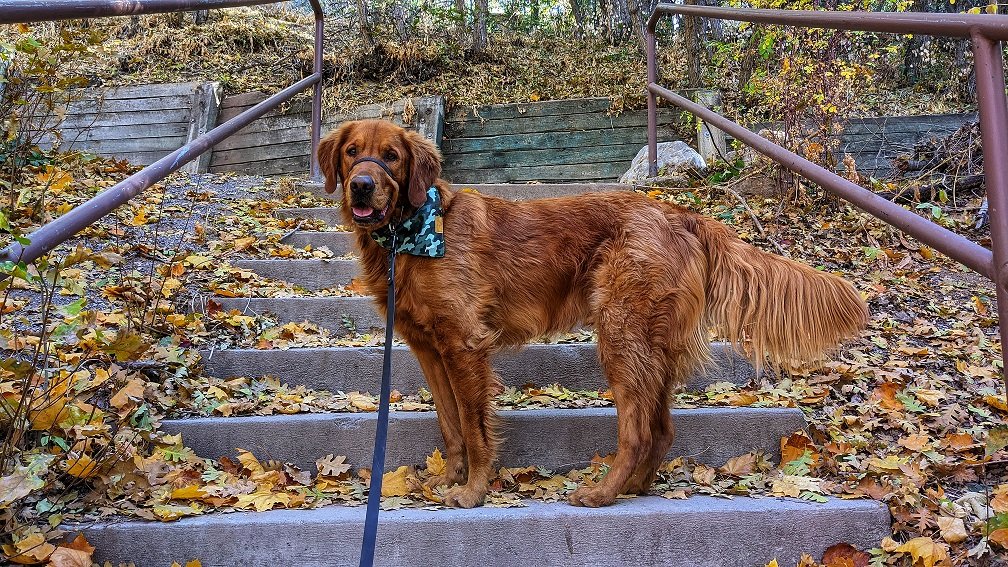

When you got a dog, one of the most exciting prospects was likely having a friend to join you on hikes or walks. Getting outside with your pup truly is one of the greatest joys of dog parenthood and it’s important for your pup to get the exercise, sniff around and stretch their legs. If you are a dog owner who lives in or is visiting Utah, you might be asking, do dogs need to be on a leash in Utah? YES. Your dog needs to be on a leash at all times unless you are in a designated off-leash dog park or wilderness area.
Now, that you’ve got the most important answer, we will break it down for you and provide plenty of places where you CAN let your dog be off-leash in Utah. We’ll also provide information on what to do if you encounter an off leash dog in an area that isn’t off leash.
As you venture out, safety for you, your dog and others is the number one priority. Knowing and following local Utah leash laws will help keep everyone happy and safe while enjoying Utah’s amazing outdoor spaces.
Dog Leash Laws in Utah
Utah currently has no statewide leash laws. It is left up to individual municipalities and designated outdoor recreation areas to decide when and where dogs must be kept on a leash. Often called “Animal At Large” in legal terms, we’ll provide all of the specifics on Salt Lake City area leash laws so you are well prepared for an adventure with your pup.
Salt Lake City & County Leash Rules- Add fines
In Salt Lake County dogs are required to be on a six-foot leash, unless otherwise noted, like dog parks, nature trails etc. It’s always best to assume your dog needs to be on a leash unless you see signage saying otherwise or you are on your own private property. This is mandated by Salt Lake County municipal code:
8.06.020 – Animal running at large.
A. It is unlawful for the owner or handler of any animal to allow such animal at any time to run at large. The owner or handler of an animal shall be strictly liable for damages to persons or property committed by such animal, and shall hold the divisions harmless from said damages or injury.
B. Dogs shall be considered running at large when off the property of their owner or handler unless a leash or tether is affixed to the dog at one end and the owner or handler at the other end, unless in a designated off-leash area.
These laws are enforced by Salt Lake County Animal Services and owners failing to keep their dogs on leash may face a civil citation or a Class B misdemeanor. Long story short, you’ll definitely want to keep your dog on leash when walking your dog in and around Salt Lake City.
Leash Laws In Park City and Other Utah Counties
Like Salt Lake County, nearly all other counties in Utah including Davis, Utah and Weber require dogs to be kept on a leash unless in a designated off-leash area.
A unique variance to the common leash rule is Park City (aka Bark City). While Park City does require all dogs to be on leash, it also allows an e-collar to be used instead of a leash as long as the owner can see and has full control of the dog. Even in designated off leash areas Park City requires owners to have “voice and sight control” over their dog. The owner must also be carrying a physical leash with them at all times.
Expand the counties below to read the official ordinances on animals at large.
-
Section 6.16.080 – Animal at large prohibited.
It is unlawful for any animal to be allowed to be “at large” as defined in this title.
Section 6.04.010 – Definitions.
6. “Animal at large” means any animal, whether licensed or not, when:a.The animal is off the property of the owner or custodian and is not under the immediate physical restraint by the owner or custodian. “Immediate physical restraint” means a durable restraint device, such as a leash, cage, or other device capable of keeping the animal under physical control.b.The animal is on the property of the owner or custodian and is not:(1)Securely confined in a building, fenced area, cage or kennel;(2)Under the immediate physical restraint by the owner or custodian; or(3)Under the immediate and effective control of the owner or custodian and does not cause fear to or constitute or appear to present any threat or danger to the safety, comfort or health of other persons.c.A working dog while being used for herding sheep, cattle, or other livestock; a hunting dog while lawfully being used to hunt game; or a dog while being trained for herding or hunting shall not be deemed to be an animal at large if the dog is under the proper control of its owner or custodian.
-
5-2-11. Dogs running at large.
(a) It is unlawful for the owner or person having charge, care, custody, or control of any dog to allow such dog at any time to run at large. The owner or person charged with responsibility for a dog found running at large shall be strictly liable for any violation(s) committed by the dog, regardless of whether or not the person knows the dog is running at large.
(b) However, dogs may be at large while participation in field trials and obedience classes organized and sanctioned by recognized dog clubs, while assisting their owner or trainer in legal hunting or in herding of livestock, while assisting a peace officer engaged in law enforcement duties, or while being trained for the above purposes so long as such dogs are under direct and effective sound or gesture control within sight of such individuals to assure that they do not violate any other provisions of law. (R.O. 1956, section 4-6-10; Ord. No. 1981-39, 10-7-81)
-
Sec 6-4-2 Animals At-Large Prohibited
It shall be unlawful for any animal to run at-large, except:
Animals may be at-large while participating in field trials and obedience classes.
Animals properly controlled by a participant as part of a recognized dog club.
Animals assisting their owner or trainer in legal hunting or in herding of livestock.
Animals assisting a peace officer engaged in law enforcement duties, or while being trained for the same.
Animals on the owner’s private property so long as such animals are under the direct and effective sound or gesture control and within sight of owners or such individuals noted above, to assure that such animals do not violate any provisions of this title.
(Ord. No. 2013-20A, § 1(0.04.020), 8-13-2013)
-
7- 3- 2. DOGS RUNNING AT LARGE.
A. Under Restraint: It shall be unlawful for the owner or person having charge, care, custody or control of any dog to allow such dog at any time to run at large. Except as provided in subsection B of this Section, a dog shall be considered under restraint of the owner and therefore not “at large” when:
1. On a leash or lead;
2. The dog is under the control of its owner through the use of an electronic dog collar, provided that the owner maintains voice and sight control as outlined in subsection B(1) of this Section and carries a physical leash or lead with them at all times;
3. Confined within a vehicle;
4. Within the real property limits of the owner;
5. Within the real property limits of another with the express permission of the property owner;
6. The dog is an agricultural dog actively working; or
7. The dog is hunting with its owner; or
8. The dog is within the boundaries of a designated off leash dog area adopted by ordinance or otherwise formally approved by the City, or a homeowners‟ association within the jurisdiction.
(B) Off Leash Areas:
1. Voice and Sight Control:
With respect to subsection (A)(8) of this Section, dogs within the boundaries of a designated off leash dog area must be managed through the use of “voice and sight control” defined as control of the behavior of a dog which is not leashed or otherwise physically restrained by its owner sufficient that the dog does not, without regard to circumstances or distractions:
a. Charge, chase, or otherwise display aggression toward any person or behave toward any person in a manner that a reasonable person would find harassing or disturbing;
b. Charge, chase or otherwise display aggression toward any animal;
c. Chase, harass or disturb wildlife or livestock;
or
d. Fail to come to and stay with the owner immediately upon command by such person.
-
ANIMAL AT LARGE: An animal is considered to be at large if it is: a) not on property owned or leased by the animal’s owner or caretaker; and b) is not restrained or encased by the owner, caretaker or designee.
ANIMAL UNDER RESTRAINT: Any animal under immediate physical control of its owner or person having charge, care, custody or control. A dog shall not be considered under control of the owner unless on a leash or lead, confined within a vehicle, or under the immediate control of the owner or caretaker at any time, or within the real property limits of the owner.
Dogs Running At Large:
It is unlawful for the owner or person having charge, care, custody or control of any dog to allow such dog at any time to run at large. The owner or person charged with responsibility for a dog found running at large shall be strictly liable for a class B misdemeanor under this section, as well as for any violation, damage or injury committed by the dog, regardless of whether or not the person knows the dog is running at large.
However, dogs may be at large while participating in field trials and obedience classes organized and sanctioned by recognized dog clubs, while assisting their owner or trainer in legal hunting or in herding of livestock, while assisting a peace officer engaged in law enforcement duties, or while being trained for the above purposes so long as such dogs are under direct and effective sound or gesture control within sight of such individuals to assure that they do not violate any other provisions at law.
Any person authorized herein to enforce this title may impound a dog at large, and dispose of such dog as provided in this title.
Dogs Prohibited Where Notice Given: It shall be a class B misdemeanor for the owner or person having charge, care, custody or control of a dog to allow such dog to be present on a public park, trail, sidewalk or gathering place where notice against such is given through the posting of signage by the entity controlling such place. Persons who use specially trained dogs to assist them with hearing, mobility or sight shall be exempt from this section.
How Do I Know If My Dog Needs To Be On-Leash?
Again this is important, so let’s repeat it: always assume your dog needs to be on a leash unless you see signage saying otherwise or you are on private property where the property owner is OK with your dog being off-leash.
It’s also important to note that even if a trail or park is a designated off-leash area, parking lots, trailheads, and campgrounds require your dog to be leashed. And keeping your dog on a leash in a parking lot is just the safest option with cars pulling in and out. We all know how chaotic trail head parking lots can get on a busy summer day.
The All-Trails app is a great resource, the free version of the app provides information on whether or not dogs are welcome on trails and whether or not they need to be kept on a leash. All-Trails is a database of nearly all hiking trails and city nature paths in the State (and country if you’re traveling). While the All-Trails app is helpful, posted signage in the area is the most important, on rare occasions, the app gets it wrong. Just be sure to check the trailhead or parking lot for the most accurate information.
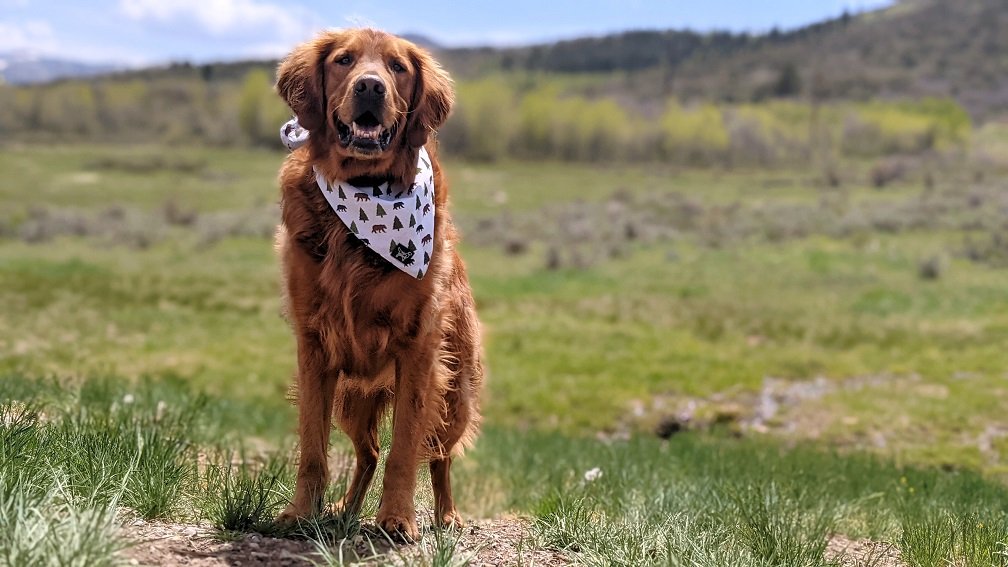
Designated Off-Leash Areas Around The Salt Lake Area
Dog parks are a great way to let your dog run and explore without a leash. It also gives your pup the opportunity to romp around with other friendly dogs. Check out our favorite dog parks around Salt Lake City. Salt Lake County also provides this helpful guide to dog parks in the area.
If you’re looking for off-leash hiking close to Salt Lake City, Millcreek Canyon is a great option. But remember, dogs are only allowed to be off-leash on odd numbered days of the month. Dogs may use the canyon on even days of the month but must remain on leash. More information on the various trails in Millcreek Canyon can be found on All-Trails or here. Neff’s Canyon, just south of Millcreek Canyon, also offers a great off-leash hiking option close to the city.
RELATED: Hiking With Dogs Around Salt Lake City
Typically, but not always, you can go leash free on public land managed by the BLM (Bureau Of Land Management). And the good news is, 42 percent of Utah is BLM land. That’s a lot of open space for you and your dog to get out there and explore!
In addition to hiking opportunities, dispersed or primitive camping is acceptable on BLM land. Yes, that means a FREE camping adventure with your pup.
The BLM website provides more information on hiking, camping and leash rules. The main thing to remember is that while your dog is off-leash you should keep your dog close and under your control, here’s where your dog’s recall skill becomes really important. Remember, you’ll likely run into other people, horses and bikers on BLM land.
Like BLM land, you almost always go without a leash in National Forests, with the same stipulation that you have eyes on and control of your pooch. Your dog must also be on a leash in parking lots and at trail heads.
Utah has five National Forests and two partial National Forests. You can find a National Forest to explore in almost all parts of the state. Here’s a handy guide and map.
With all of these fun off-leash areas, it’s important to remember to always check for signage and follow all of the posted rules, bringing us to your next topic.
Best Practices For Having Your Dog Off-Leash
If you are comfortable having your dog off-leash in a designated area, here are a few tips on how to be a considerate dog owner:
-
Always have your leash with you (this is actually required by law) and temporarily leash your dog at the request of any other passing party.
-
Ensure your dog has reliable recall – Hiring a trainer is a great way to get 100 percent recall or you can practice in a confined area like a park.
-
Make sure you can ALWAYS see your dog and keep them close (about 25 feet). This is for the safety of your dog and others.
-
Practice good manners and don’t allow your dog to approach other people or dogs without permission. Ever. You never know how another dog will react to yours.
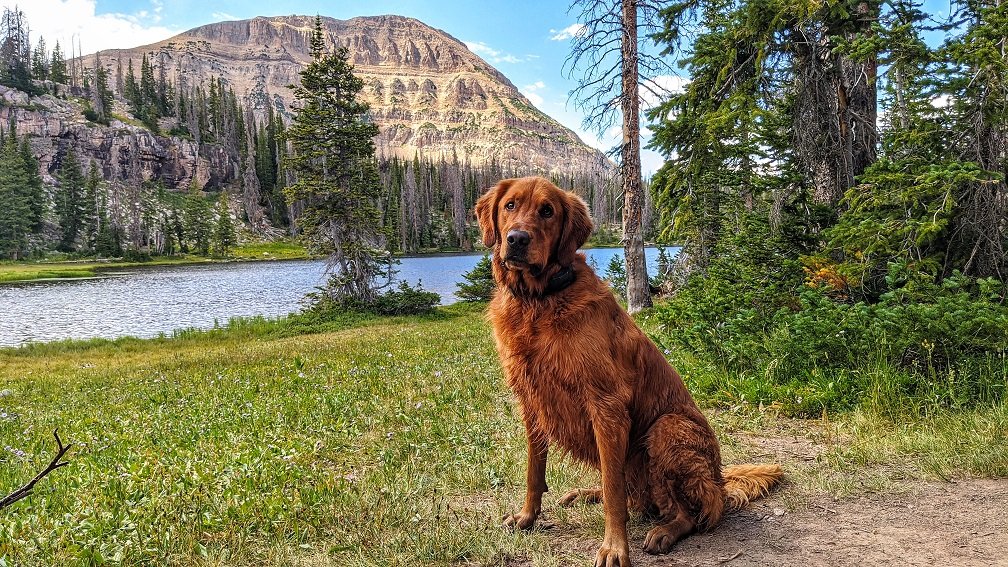
Reporting An Off-Leash Dog
If you see an off-leash dog in an area where leashes are required the best course of action would be to approach the owner and kindly let them know that the area requires dogs to be on a leash and ask if they could put their dog on a leash. Only do this if you feel safe in the situation.
Another option is to call your local animal services department. Be prepared with a description of the offender and dog, the location, and any other pertinent or identifying information. Know that animal control officers are often stretched thin and may or may not be available to come issue a fine.
Here’s a list of numbers for animal service departments around the Salt Lake area.
-
Salt Lake County: 385-468-7387
-
Utah County: 801-851-4000
-
Weber County: 801-399-8244
-
Davis County: 801-444-2200
-
Summit County: 435-336-3985
-
Wasatch County: 435-654-5727
We hope you have fun on all of your upcoming adventures with your pup. If you need a great, durable leash check out local brand, Henry and Sadie. Their biothane leashes are easy to clean and will hold up through all of your adventures. If you want your dog to become a really good leash walker, the Pet Safe Gentle Leader will help (Brandy and Scout are big fans, you can see it in photos on Instagram).
Last thought- always remember to be respectful of other dogs and humans, but don’t forget to have fun!
This post contains affiliate links which result in Dog Friendly SLC making a small commission. By shopping products we recommend, you ensure that we can keep finding dog friendly places in Salt Lake City and Utah. We appreciate your support!
This post may contain affiliate links which result in Dog Friendly SLC making a small commission. By shopping products we recommend, you ensure that we can keep finding dog friendly places in Salt Lake City and Utah. We appreciate your support!
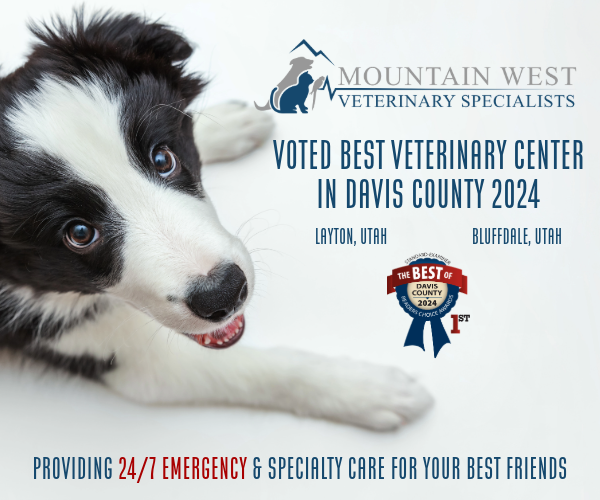


![Aarf_300x250[1]](https://dogfriendlyslc.com/wp-content/uploads/2023/01/Aarf_300x2501.png)



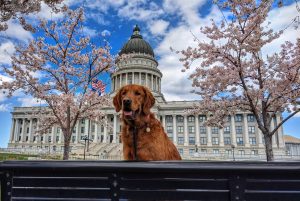
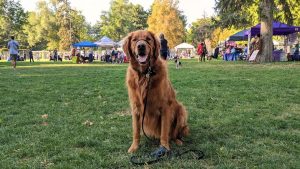



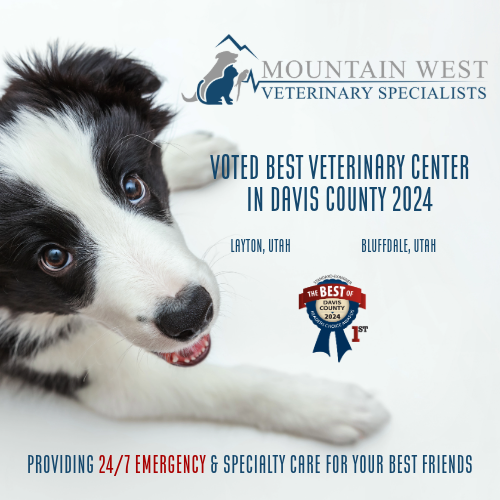



![Aarf_728x90[1]](https://dogfriendlyslc.com/wp-content/uploads/2023/04/Aarf_728x901.png)

